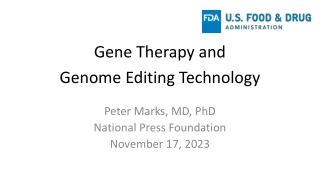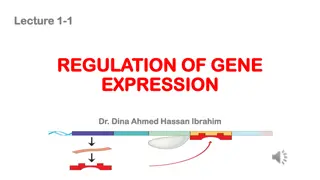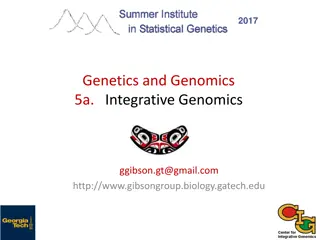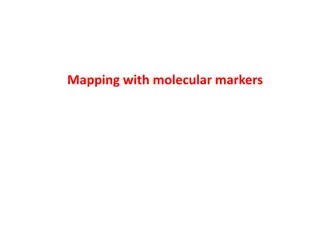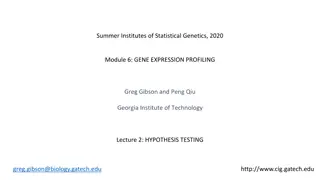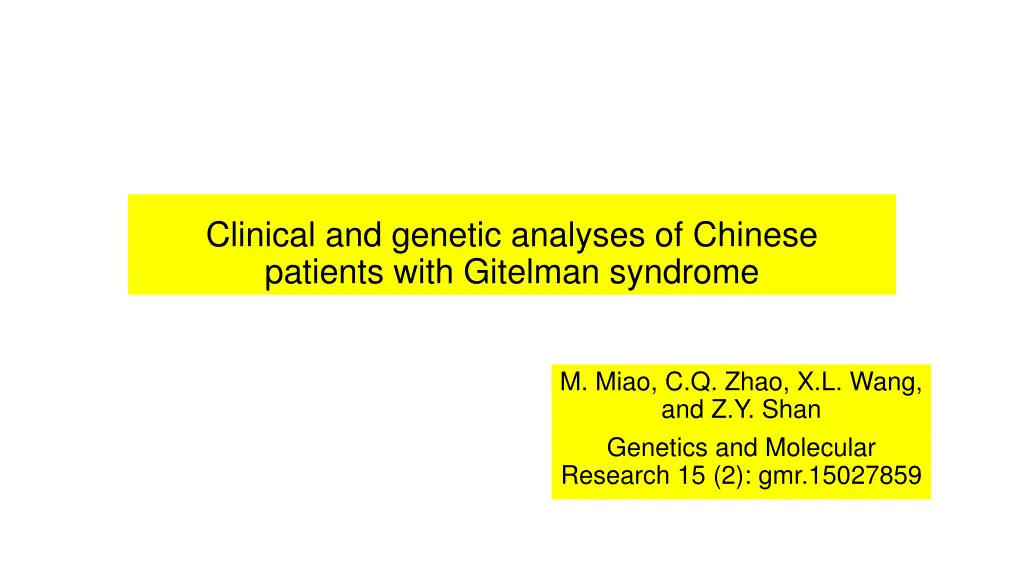
Clinical and Genetic Analyses of Chinese Patients with Gitelman Syndrome
Explore the clinical and genetic aspects of Gitelman syndrome in Chinese patients through a study evaluating genotype-phenotype relationships. Learn about the incidence, characteristics, diagnostic criteria, and laboratory tests associated with this renal tubular disease.
Download Presentation

Please find below an Image/Link to download the presentation.
The content on the website is provided AS IS for your information and personal use only. It may not be sold, licensed, or shared on other websites without obtaining consent from the author. If you encounter any issues during the download, it is possible that the publisher has removed the file from their server.
You are allowed to download the files provided on this website for personal or commercial use, subject to the condition that they are used lawfully. All files are the property of their respective owners.
The content on the website is provided AS IS for your information and personal use only. It may not be sold, licensed, or shared on other websites without obtaining consent from the author.
E N D
Presentation Transcript
Clinical and genetic analyses of Chinese patients with Gitelman syndrome M. Miao, C.Q. Zhao, X.L. Wang, and Z.Y. Shan Genetics and Molecular Research 15 (2): gmr.15027859
Introduction Gitelman syndrome (GS) is an autosomal recessive renal tubular disease with clinical manifestations similar to those of Bartter syndrome (BS). The main clinical features of this disease are hypokalemia, hypomagnesemia, low urinary calcium, and high aldosterone levels with normal blood pressure. The prevalence of GS in the Caucasian population is approximately 1/40,000.
However, the incidence of GS in the Chinese population remains unreported. Mutations in the SLC12A3 gene located on the long arm of chromosome 16 may cause GS. SLC12A3 encodes the thiazide sensitive sodium chloride cotransporter (NaCl cotransporter or NCCT).
AIM To evaluate the genotype-phenotype relationship of Gitelman syndrome in Chinese patients.
Materials & method Study subjects Out of the 50 patients treated for hypokalemia from January 2014 to December 2014 at the Department of Endocrinology of the First Affiliated Hospital of China Medical University, 10 patients were selected for analysis in this study based on the clinical diagnostic criteria of GS. 6 males and 4 females, aged 18 to 65 years, with a course of the finding or symptoms of hypokalemia of 0.5 to 10 years. The Hospital Ethics Committee of the First Hospital of China Medical University approved the study, and all the patients provided written informed consent.
Inclusion criteria Hypokalemia, alkalosis, high urinary potassium, hypomagnesemia, low urinary calcium/creatinine ratio, and increased activity of the renin-angiotensin system but normal blood pressure. Exclusion criteria: Patients with metastatic hypokalemia, gastrointestinal loss of potassium, RTA, or medication history including treatment with diuretics, or ethanol were excluded from this study
Lab tests Blood electrolyte - automatic biochemical analyzer. ACTH and cortisol levels -chemiluminescence immunoassay method. Plasma renin activity, plasma angiotensin, and plasma aldosterone - radioimmunoassay
Genetic testing Genomic DNA was extracted from peripheral blood using a DNA extraction kit The polymerase chain reaction (PCR) product was purified using an agarose gel extraction kit (Tiangen Biotech Beijing Co., Ltd.).
All exons and exon-intron boundaries of the SLC12A3 and CLCNKB genes were amplified. When compound heterozygous mutations were suspected, the PCR products were inserted into the pCR2.1 TOPO vector (TA Cloning Kit, Invitrogen) and reamplified from 15 independent positive clones for direct sequencing (Shanghai Simplegen Medical Laboratory and Beijing BGI Sequencing).
In silico functional prediction of mutations Functional prediction of mutations was performed using the online protein prediction software package PolyPhen-2 (http://genetics.bwh.harvard.edu/pph2/) and PROVEAN/SIFT (http://provean.jcvi.org/).
Discussion In 1966, Gitelman and coworkers first reported three female patients, aged 22-47 years, with clinical manifestations similar to those of Bartter syndrome as well as hypomagnesemia and low urinary calcium The development of GS is attributable to mutations in the SLC12A3 gene located on the long arm of chromosome 16
To date, more than 140 SLC12A3 mutations have been reported in the Human Gene Mutation Database including missense mutations, splice site mutations, nonsense mutations, and frameshift mutations, the majority being missense mutations Compound heterozygous mutations have been reported in more studies than homozygous mutations.
Genetic testing of a group of patients clinically diagnosed with GS shows that T60M may be the most common mutation in the Chinese population. Since Batter syndrome and Gitelman syndrome have somewhat overlapping phenotypes, they further screened the patients for mutations in the target genes, SLC12A3 and CLCNKB, to ascertain the genetic basis of GS in these patients.
6 patients carried SLC12A3 mutations. Patient #2 carried the homozygous T60M mutation, which has been reported to be a common mutation in Chinese and Japanese patients with GS Patient #1 carried the heterozygous L858H mutation, which has been reported exclusively in Japanese patients with GS
They hypothesized that the heterozygous L858H mutation is not sufficient to cause GS There may be variations in gene regulatory regions or unknown mutations in other genes that lead to phenotypes similar to GS. heterozygous mutations or polymorphisms in the SLC12A3 gene might significantly affect blood pressure levels
Patient #6 carried the heterozygous L671P mutation, which had not been previously reported. L671P is located in the conserved regions of the protein, impairing its normal function. Results suggest that the L671P mutation may be a novel gene mutation that can lead to the GS phenotype.
The other three patients (#4, 9, and 10) carried compound heterozygous mutations (N359K/D486N, N359K/c.493- 496delACGG, and D486N/R928C). Among these mutations, N359K, D486N, and R928C have been described in GS patients
After treatment with a potassium supplement combined with potassium magnesium aspartate, and/or spironolactone, the clinical symptoms of hypokalemia in these six patients were relieved. Hypomagnesemia and hypokalemia could not be entirely corrected, indicating that the ion disorder in GS patients is difficult to treat and requires long-term use of a combination of medications.
Conclusion GS is a disease with a good prognosis and slow progression The clinical manifestations of ten cases in this study suggest that patients with refractory hypokalemia may be affected by GS These patients should undergo genetic diagnostic tests as early as possible to confirm the clinical diagnosis, improving their prognosis as well as their quality of life.
Clinical diagnoses of ten patients were consistent with Gitelman syndrome. Disease-causing mutations in the SLC12A3 gene were found in six patients. No disease-causing mutations were observed in the other four patients. Since mutations in the SLC12A3 and CLCNKB genes are not present in all patients with clinical manifestations of Gitelman syndrome, genetic screening after clinical diagnosis is essential.
References Aoi N, Nakayama T, Tahira Y, Haketa A, et al. (2007). Two novel genotypes of the thiazide- sensitive Na-Cl cotransporter(SLC12A3) gene in patients with Gitelman s syndrome. Endocrine 31: 149-153. http://dx.doi.org/10.1007/s12020-007-0024-9 Bonfante L, Davis PA, Spinello M, Antonello A, et al. (2001). Chronic renal failure, end- stage renal disease, and peritoneal dialysis in Gitelman s syndrome. Am. J. Kidney Dis. 38: 165-168. http://dx.doi.org/10.1053/ajkd.2001.25210 Cal LA, Marchini F, Davis PA, Rigotti P, et al. (2003). Kidney transplant in Gitelman s syndrome. Report of the first case. J. Nephrol. 16: 144-147. Galli-Tsinopoulou A, Patseadou M, Hatzidimitriou A, Kokka P, et al. (2010). Gitelman syndrome: first report of genetically established diagnosis in Greece. Hippokratia 14: 42-44. Gitelman HJ, Graham JB and Welt LG (1966). A new familial disorder characterized by hypokalemia and hypomagnesemia. Trans. Assoc. Am. Physicians 79: 221-235.

